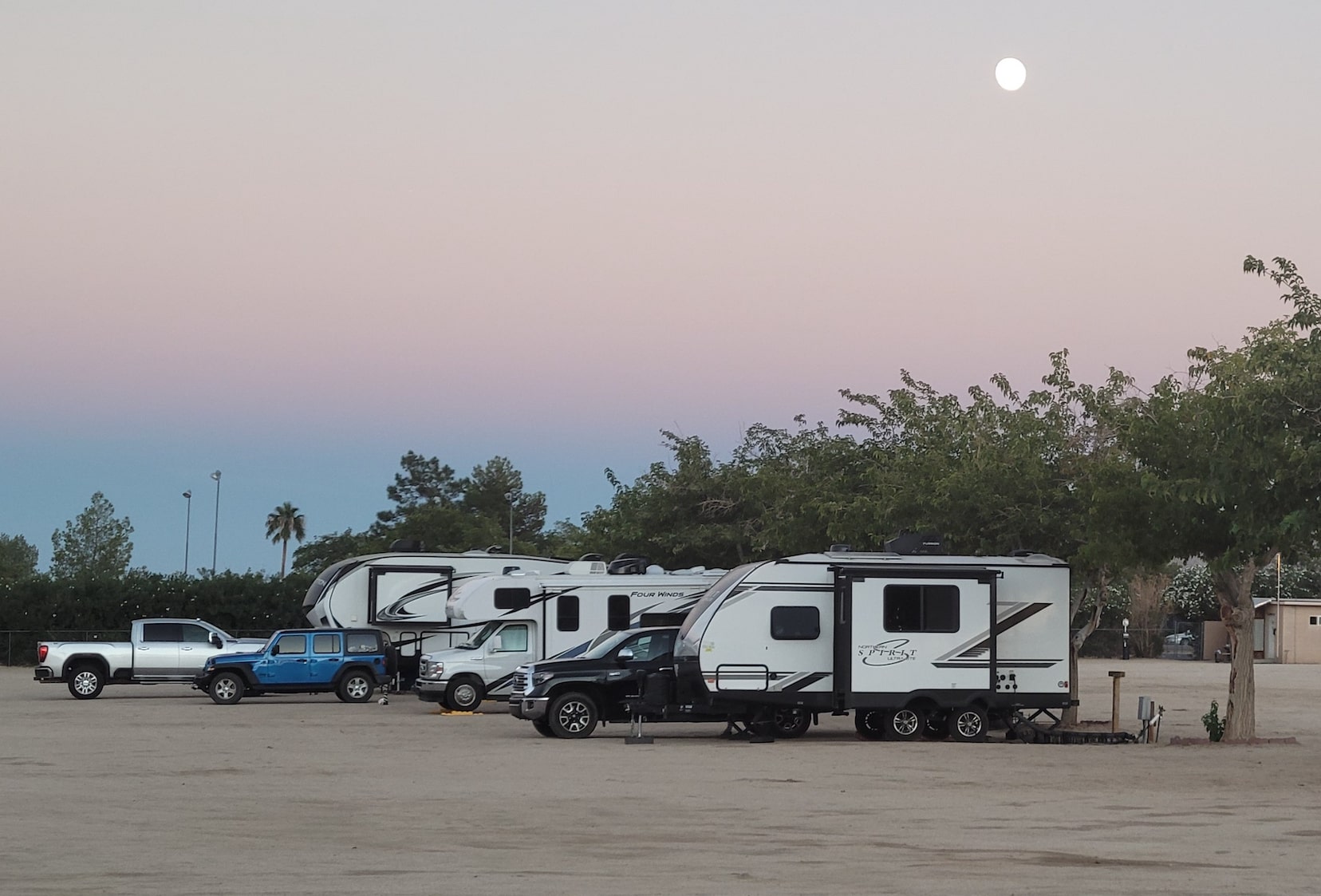RV Camping Terms You Should Know
01/04/23If you are new to backpacking, phrases like “bivouac” or a “walk up” may make you tilt your head in question. Perhaps you know what a “daypack“ is, but do you know what a “rucksack“ is? When you venture out into the remote wilderness, you may even find yourself doing some “cowboy camping.”
Once you are deep into hiking, you’ll hear a lot of foreign terms thrown around. We’re here to help you navigate a new language – the language of outdoor fun and adventure.

Blaze: Blazes are small rectangular symbols painted on trees to mark a trail. If there is more than one trail, follow a certain path for a time; different colored blazes may be used to distinguish each trail. They help hikers to identify which trail they are on and to stay on that path. Similarly, a ‘double blaze’, shown as two rectangles with the upper blaze slightly offset toward the direction of the trail turn, is used to indicate which direction hikers should go.
Cairn: A small stack of stones used to identify the path on a trail. Often used in remote areas where trees are not present, such as an alpine or desert region. The term “cairn” is Gaelic for “heap of stones” and has been used around the world to guide explorers and mark trails throughout history.
Rucksack: This is a sort of backpack with shoulder straps that are used by hikers and other outdoor enthusiasts. Rucksacks are often made of canvas or similar durable material. They are super sturdy and designed to fit more gear than a regular backpack, which makes them a great addition to your camping gear list.
Carabiner: You may already know what this is, but a surprising number of people don’t. It is a very handy tool used by adventurers that is basically a sturdy metal clip with a spring gate and threaded closure. They are great for attaching water bottles to backpacks, ropes to anchors, and so many other things. Carabiners come in all manner of shapes and sizes and should be part of your gear.
Cowboy camping: For backpackers who enjoy multi-day hikes in remote areas, oftentimes all they need is a good warm sleeping bag. Cowboy camping is sleeping under the stars without a tent or other type of shelter. This keeps your backpack light and your adventures free.
Temperature rating: When shopping for a sleeping bag, you’ll often find this in the product description. It will help determine which bag is suitable for the season and climate. This temperature rating is a universal standard regulated by the International Organization for Standardization that includes maximum temperature, limit temperature, comfort temperature, and extreme temperature. The rating represents the temperature at which the average person will perspire slightly, may be slightly cold, sleep comfortably, and may be at risk of hypothermia, respectively
Bivouac: When backpacking, a hiker may be forced to stop and set up a temporary campsite due to bad weather. This improvised campsite, called a bivouac, may consist of a tarp, sleeping bag or bivy sack, but it does not include a tent. Climbers may also bivouac on ledges during an extended climb that lasts more than one day.
Ridge: A narrow strip or long elevation of land that is often on the top of a mountain. Ridge trails are hiking trails that follow the ridge of a chain of hills or mountaintops and offer excellent views along the way.
Switchback: These are trails found in steep areas that zigzag up a ridge or mountain. They increase the overall length of the trail but make it easier to climb a steep slope by creating a more gradual ascent. They are also easier on the knees going down.
Topographic map: A type of map that shows roads, land features, bodies of water, and elevation. Hikers use topographic maps a lot to find out the change in elevation of a mountain or to locate a water source nearby.
Walk-up: This refers to an accessible summit of a large hill or mountain that can be reached by walking. Those who don’t have climbing experience can still enjoy glorious views from high-altitude walk-up summits.
Bearing: When out hiking, your bearing is the direction of travel from where you are now to a future landmark or destination. A bearing is expressed in degrees from 0 to 350, with 0 being magnetic north.
Bivy sack: This is a lightweight sack that can be used as a temporary shelter when out backpacking to keep you and your sleeping bag dry. Most bivy sacks are similar in size to a sleeping bag but are made of lighter material.
